By Andy Winfield
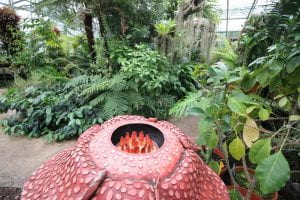
The plant world is vast, so many habitats and landscapes colonised, synching with weather patterns and animal habits to reproduce and feed from light, water and soil to stay alive. All the while, in all these biomes, there exist plants that live on other plants; extracting the hard-earned food for themselves.
Parasitic plants exist everywhere and use all manner of adaptations to live; you may have seen in the news recently that the largest flower ever recorded on the species that produces the largest flower in the plant kingdom was recently discovered in Malaysia. Rafflesia is a parasitic plant, you only know it exists as its flower buds emerge on the ground before, sometimes a year later, a large and malodorous flower unfurls itself. The Rafflesia gets all its food from a host plant, so only needs to reproduce, just one job… Rafflesia pollination is a rare event; each flower has a gender and so male and female flowers need to be flowering near each other at the same time. When it isn’t flowering the plant exists as threads of tissue installed within the cells of its host, a tropical vine called Tetrastigma, which feed off the travelling nutrients; there is no need for its own photosynthesis, it has everything it needs. In time flower buds appear on the vine roots and slowly develop over the course of a year before unfolding to reveal the flesh like petals of the flower; for two days the stench from the flower attracts flies (and botanists!) who cover themselves in the rancid pollen. When pollination occurs, small fruit are produced and seed distributed by tree shrews; a successful germination produces no green shoots or cotyledons, the growth heads downwards, searching for the roots of a prospective host for the process to begin again.
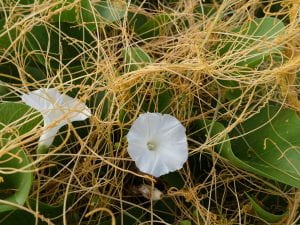
While Rafflesia coexists with its host without causing too much pain, Cuscuta is another matter; otherwise known as dodder, Cuscuta feed off stems. Recent research suggests that, once germinated, a dodder seed will smell a host; time is limited for the young plant and with only a week to locate food it has to act fast. Dodder has evolved to be able to smell out a nearby food source; the seedling can sense chemicals emitting off an unsuspecting victim and changes its direction of growth. Once located and plugged in to its new home, the dodder grows rapidly, circling and twisting like hundreds of skinny pythons before smothering its host.
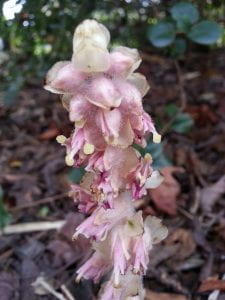
Rafflesia and Cuscuta are known as obligate parasites, they sustain themselves entirely on the host plant; there are plants that take some, but not all their nourishment from a host and these are known as hemiparasitic plants. Here in the Garden we have examples of both. Toothwort, Lathraea squamaria, lives on the roots of native trees such as hazel, beech or alder; its roots have suckers at the tip called haustoria ready to dock onto a root. The name Lathrea derives from the Greek lathraios meaning secret, a reference to a furtive underground existence; the cover is blown when creamy flower spikes appear in spring attracting the attention of purposeful bumblebees (and botanists!).
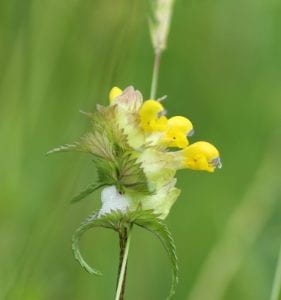
Hemiparasites can be seen above the ground, they have green leaves and photosynthesize a little. One such plant in the Garden is yellow rattle, Rhinanthus minor, introduced into our native meadow; at the end of flowering the seeds of this plant sit loosely in its brown paper bag like calyx, and when the wind blows, they rattle. This hemiparasite is good for meadows as it will steal nutrients from vigorous grasses preventing their dominance, slowing growth down and allowing more delicate native species back into the area.
Mistletoe, Viscum album, is another hemiparasite that we’ve introduced into the Garden; in 2013 we stuck its sticky seeds on a hawthorn plant to see what would happen; after a slow start the plant has now taken off and we hope for a bunch next winter. This mysterious and magical plant that somehow stayed green all winter is the source of much folklore; a sign of fertility and an origin of Norse myths, although, its name has less romantic origins. ‘Mistel’ comes from an old Anglo Saxon dialect meaning dung and ‘tan’ meant twig, evolving over time into mistletoe; a reference to birds pooping out the seed which sticks to a branch. Let’s keep that to ourselves though, I’m not sure many people would be queuing up to kiss under the bird droppings…
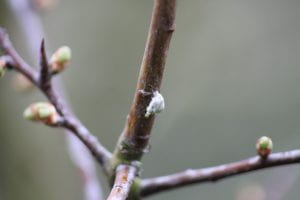



A great read Andy and as riveting as any of the parasites you were talking about :@)